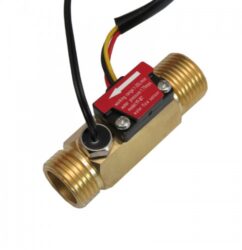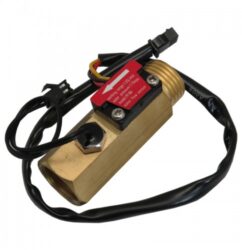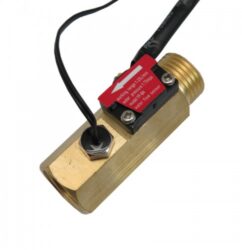- 3D Printer
UPS SERVICE
Shipping & ReturnsSTORES
Find retail locationsFREE SHIPPING
For orders above €100
CUSTOMER CARE
For All Your Questions
- Wireless & IOT
UPS SERVICE
Shipping & ReturnsSTORES
Find retail locationsFREE SHIPPING
For orders above €100
CUSTOMER CARE
For All Your Questions
- Sensors
UPS SERVICE
Shipping & ReturnsSTORES
Find retail locationsFREE SHIPPING
For orders above €100
CUSTOMER CARE
For All Your Questions
- Modules
UPS SERVICE
Shipping & ReturnsSTORES
Find retail locationsFREE SHIPPING
For orders above €100
CUSTOMER CARE
For All Your Questions
- Microcontroller Unit (MCU)
UPS SERVICE
Shipping & ReturnsSTORES
Find retail locationsFREE SHIPPING
For orders above €100
CUSTOMER CARE
For All Your Questions
- Development Boards
UPS SERVICE
Shipping & ReturnsSTORES
Find retail locationsFREE SHIPPING
For orders above €100
CUSTOMER CARE
For All Your Questions
Step 5: Simulating Stepper Motor Behavior with a BLDC Motor
Introduction
Now that we have implemented closed-loop position control using a PID controller, the next step is to make the BLDC motor behave like a stepper motor. This is crucial if you want to control the motor using a system designed for stepper motors, such as a CNC controller or a G-code sender.
In this step, we will:
✅ Understand how a stepper motor works and why we need to simulate it.
✅ Modify our code to accept step and direction signals.
✅ Implement precise movement control using external step pulses.
✅ Test the system by commanding the motor to move to specific positions.
1. How Does a Stepper Motor Work?
A stepper motor moves in discrete steps. Each pulse sent to the motor controller makes it move a fixed angle (e.g., 1.8° per step for a 200-step motor). Stepper motors use an open-loop control system, meaning there is no feedback; the controller assumes the motor has moved correctly.
In contrast, a BLDC motor is usually designed for continuous rotation, controlled by a PWM signal. To simulate a stepper motor, we must:
- Accept step pulses from an external controller.
- Use these pulses to update the desired position (setpoint).
- Move the motor accordingly using closed-loop control.
2. Wiring Setup for Step and Direction Control
To make the BLDC motor behave like a stepper motor, we need to connect an external controller (like an Arduino, CNC shield, or stepper driver signal source) to send step and direction signals.
🔌 Required Pin Characteristics:
- Step Signal Input: This pin should support interrupts to detect incoming step pulses accurately.
- Direction Signal Input: A digital input pin that determines the rotation direction.
- Encoder A/B Inputs: Digital input pins capable of reading high-frequency signals from the encoder.
- PWM Output to ESC: A pin that supports PWM (Pulse Width Modulation) to control the ESC speed.
3. Modifying the Code for Stepper Simulation
Now, we will modify the code to:
- Detect incoming step pulses and increment or decrement the setpoint accordingly.
- Read the direction signal to determine whether to move clockwise or counterclockwise.
- Use PID control to move to the updated position.
📝 Arduino Code: Step Pulse-Based Position Control
#include <PID_v1.h>
// Define pin variables based on required characteristics
const int encoderA = /* Digital input pin capable of reading high-frequency signals */;
const int encoderB = /* Digital input pin capable of reading high-frequency signals */;
const int pwmPin = /* PWM-capable output pin for ESC control */;
const int stepPin = /* Interrupt-capable input pin for detecting step pulses */;
const int dirPin = /* Digital input pin for reading direction signal */;
volatile int encoder_position = 0;
volatile int setpoint = 0;
double input = 0, output = 0;
// PID Parameters
double Kp = 2.0; // Proportional Gain
double Ki = 0.5; // Integral Gain
double Kd = 0.1; // Derivative Gain
PID myPID(&input, &output, &setpoint, Kp, Ki, Kd, DIRECT);
void encoder_ISR() {
if (digitalRead(encoderA) == digitalRead(encoderB)) {
encoder_position++;
} else {
encoder_position--;
}
}
void step_ISR() {
if (digitalRead(dirPin) == HIGH) {
setpoint++; // Move forward
} else {
setpoint--; // Move backward
}
}
void setup() {
Serial.begin(115200);
pinMode(encoderA, INPUT);
pinMode(encoderB, INPUT);
pinMode(pwmPin, OUTPUT);
pinMode(stepPin, INPUT_PULLUP);
pinMode(dirPin, INPUT_PULLUP);
attachInterrupt(digitalPinToInterrupt(encoderA), encoder_ISR, CHANGE);
attachInterrupt(digitalPinToInterrupt(stepPin), step_ISR, RISING);
myPID.SetMode(AUTOMATIC);
myPID.SetOutputLimits(1000, 2000); // Adjust PWM range for ESC
}
void loop() {
input = encoder_position;
myPID.Compute();
int pwm_signal = (int)output;
analogWrite(pwmPin, pwm_signal);
Serial.print("Target: "); Serial.print(setpoint);
Serial.print(" | Position: "); Serial.print(encoder_position);
Serial.print(" | PWM: "); Serial.println(pwm_signal);
delay(50);
}4. Testing the System
Now that the code is ready, let’s test it by sending step signals from an external controller.
✅ Testing Steps:
1️⃣ Connect an Arduino, CNC controller, or stepper driver to send step pulses.
2️⃣ Send step signals using a G-code sender or a test program.
3️⃣ Observe the motor’s response—it should move precisely according to the step pulses.
4️⃣ Use serial monitoring to check the position and PID response.
5. Fine-Tuning for Better Accuracy
To ensure the motor behaves like a real stepper motor, consider the following adjustments:
- Increase Kp if the motor is too slow.
- Increase Ki if the motor is drifting away from the setpoint.
- Increase Kd to reduce overshooting.
- Check for signal noise—use pull-up resistors if needed.
6. Next Steps: Advanced Motion Control (Step 6)
Now that our BLDC motor responds to step pulses like a stepper motor, we can:
✅ Add acceleration and deceleration profiles.
✅ Implement microstepping-like smooth motion.
✅ Optimize the motion response for high-speed applications.
In Step 6, we will focus on making the motion even smoother and more precise!




